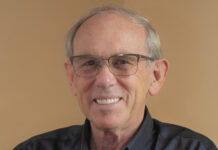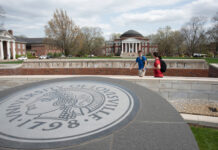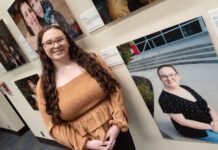“This gives you the opportunity to apply what you’ve been learning in class,” NCPI Director Marianna Perry told the group before the community residents, police officers and out-of-town students set out to see what environmental factors might affect crime or people’s perception of safety.
The 30 students from the “Crime Prevention through Environmental Design” (CPTED) class divided up to look at elements ranging from lighting levels to graffiti, trash to landscaping. Perry and visiting NCPI instructor Stan Carter briefed the group beforehand at the Presbyterian Community Center on being attentive to whether property seemed well-tended, what areas seemed to reflect pride in the neighborhood and whether specific areas are used for their intended purpose.
Carter, who has taught for NCPI for 20 years, is one of the leading CPTED experts in the country and instrumental to the institute’s success, according to Perry. Since 1971, NCPI has provided crime prevention and security-related training throughout the United States and Canada.
Although it’s easier to incorporate CPTED principles into a new development, before things are built, there are elements that can be changed later in an older, more established neighborhood. Carter will remain several days to assess the neighborhood’s public areas.
“A lot of times neighborhood change is a block at a time,” he said.
“Making changes in the public realm is difficult….I find it interesting to work in that challenging environment,” Carter said.
Through a grant, the crime prevention institute is working with the Louisville Metro Department of Health and Wellness and the Presbyterian Community Center on issues in the area. The class offering and field exercise were linked to an evolving partnership between NCPI and the community.
William Minter, program director with the neighborhood leadership program ChangeMakers, which is affiliated with the community center on South Hancock Street, was one of the class participants looking to improve the area’s quality of life.
“What’s important is not to look at it as neighborhood policing. It’s looking at the positives,” Minter said.
As Carter, Perry and the students embarked on their walk through the area, they also hoped to talk to the residents in public areas of the community to see whether they feel safe in their neighborhood and to ask what would make them feel even safer.
“It’s an area where there are a lot of opportunities,” Perry said. “It’s a neighborhood that’s in transition.”


























